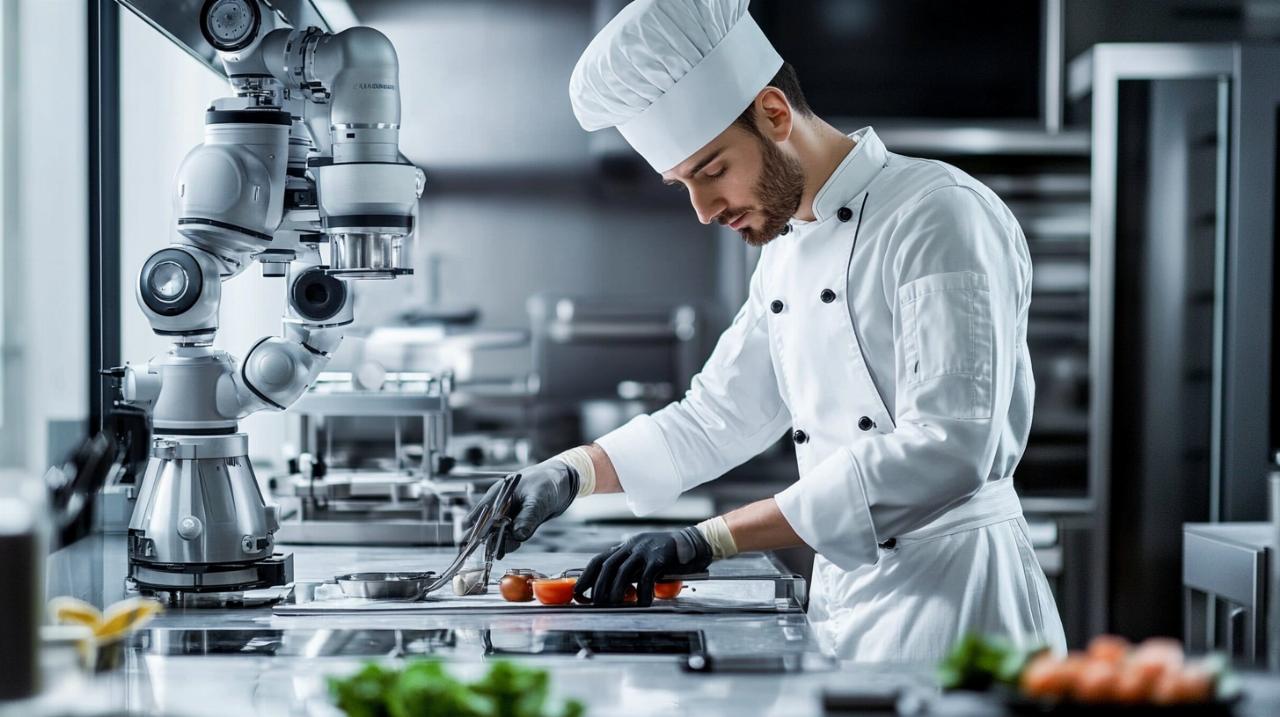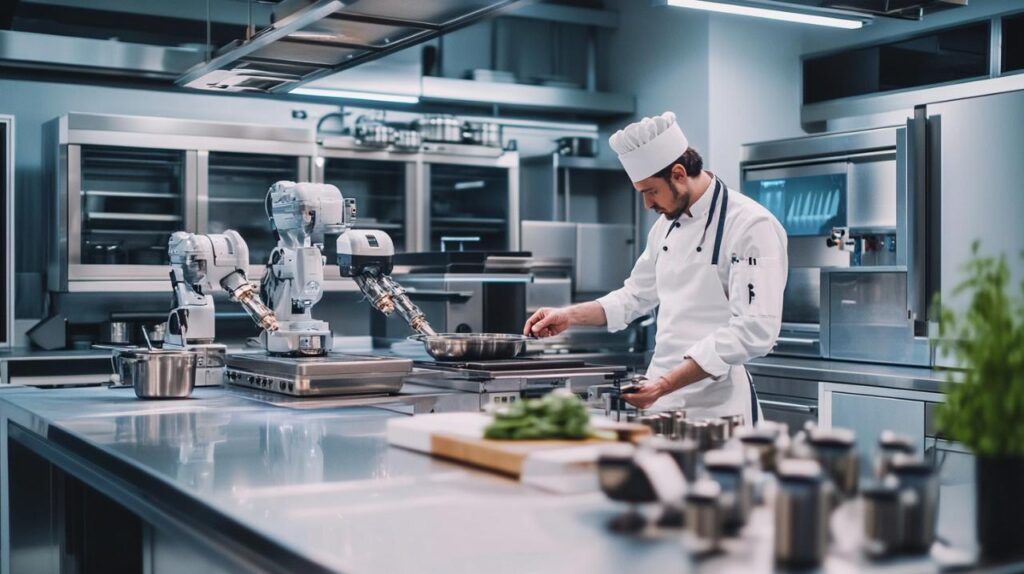Investing in a kitchen robot for professional use represents a significant decision that can transform the efficiency and output of any commercial cooking operation. With the market offering an extensive range of models equipped with varying capabilities and price points, understanding what distinguishes a truly professional-grade appliance from consumer alternatives becomes crucial. This comprehensive guide will walk you through the essential considerations and highlight models that deliver exceptional performance in demanding culinary environments.
Key Features to Consider When Choosing a Professional Kitchen Robot
Selecting the right food processor or cooking robot for a professional setting demands careful attention to several critical factors. The decision should never be rushed, as the right choice will serve your kitchen reliably for years whilst the wrong one can lead to frustration and wasted investment. Before committing to any professional kitchen robot advice, it is essential to evaluate your specific operational requirements alongside the technical specifications that will support high-volume production.
Motor Power and Processing Capacity for Commercial Demands
The heart of any kitchen robot lies in its motor, and for professional applications, power cannot be compromised. A good food processor should feature a motor of at least 500 watts, though truly professional models typically offer between 1400 and 2200 watts to handle continuous operation and dense ingredients without strain. This substantial power ensures consistent performance throughout extended service periods, allowing chefs to process large quantities of ingredients without interruption or overheating concerns.
Equally important is the heat capacity for models that incorporate cooking functions. Ideal heat capacity sits between 900 and 1000 watts, which guarantees even and quick cooking across various dishes. When examining cooking robots with induction capabilities, adjustable temperatures can reach up to 140 degrees Celsius in premium models, offering precise control over delicate preparations. The Kenwood KCook exemplifies this with its temperature adjustment reaching 180 degrees Celsius combined with a practical capacity.
Bowl capacity represents another vital consideration for commercial kitchens. Most professional models feature jug capacities ranging from 2 to 4.5 litres, making them suitable for preparing ingredients for four or more portions simultaneously. The Cecotec Mambo Cooking Unique boasts an impressive 4.5-litre jug, whilst its sibling the Mambo 8090 offers a 3.3-litre capacity. The Magimix Food Pro 4200XL stands out with its 3-litre capacity paired with 950 watts of power and nine attachments, making it particularly well-suited for larger families or small catering operations.
Build Quality and Durability for Long-Term Investment
Professional environments demand equipment that withstands rigorous daily use over extended periods. High-end models frequently employ stainless steel construction, which offers superior durability whilst simplifying cleaning procedures. The Taurus Mycook Touch WiFi exemplifies this approach with its robust stainless steel components designed for intensive commercial applications. Similarly, models like the KM3896 feature stainless steel bowls with 5.5-litre capacity and planetary mixing action, ensuring thorough ingredient incorporation without manual intervention.
The expected lifespan of quality cooking robots typically ranges from five to ten years when properly maintained, making the initial investment more justifiable when viewed across this timeframe. The Ankarsrum Assistant Original, with its 1500-watt motor and eighteen accessories, represents the type of robust engineering that supports decade-long service. Construction quality also affects cleaning efficiency, with dishwasher-safe components reducing labour time significantly in busy kitchen environments.
Safety features merit serious consideration, particularly overheat protection mechanisms that prevent motor damage during extended operations. The best professional kitchen robots incorporate multiple safety systems including automatic shut-off functions and secure locking mechanisms that prevent operation unless properly assembled. User interface design also impacts daily operations, with touchscreen controls like those found on the Cecotec Mambo Touch with its TFT display offering intuitive operation even during hectic service periods.
Top professional kitchen robots worth your investment
Having established the essential criteria, examining specific models reveals which kitchen robots genuinely deliver professional performance. The market offers options across various price brackets, from entry-level commercial units starting around three hundred pounds to premium systems exceeding one thousand pounds. Understanding which models provide the best balance of features, reliability, and value helps narrow the selection process considerably.

Premium models suited for high-volume catering operations
At the pinnacle of kitchen automation technology sits the Thermomix TM6, renowned for its advanced capabilities and extensive function library. With a price point typically exceeding six hundred euros, this German-engineered marvel combines precision temperature control, integrated scales, guided recipes, and connectivity features that streamline professional cooking workflows. The investment reflects decades of refinement in both hardware and software, resulting in exceptional consistency across repetitive tasks.
The CookingPal Multo represents another sophisticated option, offering smart cooking capabilities with Bluetooth connectivity and an extensive recipe database. This model particularly appeals to operations seeking to standardise recipe execution across multiple preparation stations or shifts, as the guided programmes ensure consistent results regardless of operator experience. The Robot Coupe R2UDICE brings multi-functional versatility to professional kitchens with various attachments designed for specialised tasks, making it invaluable for establishments requiring diverse preparation techniques.
For operations prioritising sheer processing power, the Breville Sous Chef 16 delivers with its induction motor and three-in-one feed chute that accommodates ingredients of varying sizes without pre-cutting. This efficiency translates directly into labour savings during high-volume preparation periods. The Bosch MC812S814 offers an impressive sixty functions with 240V AC input, providing comprehensive capabilities within a single unit that can replace multiple traditional appliances.
Versatile options balancing performance and value
Not every professional kitchen requires top-tier investment, and several mid-range options deliver remarkable performance at more accessible price points. The Ninja Food Processor With Auto-IQ stands out as exceptional value at approximately one hundred and twenty pounds, combining 850 watts of power with seven operational modes and five attachments. Its 2.1-litre capacity suits smaller catering operations or specialised preparation tasks, whilst its proven durability ensures reliable service over years of regular use.
The Kenwood MultiPro series deserves particular attention, with models like the MultiPro Go offering compact solutions ideal for kitchens with limited workspace. At under fifty pounds, this 650-watt model with 1.3-litre capacity provides excellent functionality for smaller establishments or as a supplementary unit for specific tasks. The KitchenAid 2.1-litre food chopper combines ease of use with quiet operation, making it perfect for open kitchen environments where noise levels matter. Its 240-watt motor and six attachments handle most chopping tasks efficiently without the bulk of larger processors.
The Cecotec Mambo Touch presents compelling value with its 3.3-litre capacity, 1600-watt motor, and guided recipes accessible through a dedicated application. This connectivity allows kitchen staff to follow standardised procedures precisely, reducing training time for new employees whilst maintaining output consistency. Models incorporating integrated scales, such as the Cecotec Mambo 12090, eliminate the need for separate measuring equipment and reduce preparation errors through precise ingredient tracking.
For establishments seeking maximum versatility, the six-in-one electric kitchen mixer with its 6.5-litre stainless steel bowl and 1.5-litre glass jar attachment offers remarkable flexibility. Six adjustable speeds accommodate everything from gentle folding to vigorous whipping, whilst the four-year guarantee provides reassurance regarding long-term reliability. Additional accessories like multi-level steamers and ingredient dispensers can significantly enhance any processor's capabilities, transforming a basic appliance into a comprehensive preparation station.
Ultimately, the best choice depends on specific cooking needs, available budget, and existing kitchen routines. Operations focusing on bread production might prioritise models with robust dough hooks and powerful planetary mixing action, whilst those emphasising sauce work would benefit from precise temperature control and blending capabilities. Customer feedback from fellow professionals provides invaluable insights into real-world performance, helping identify potential issues before committing to purchase. Whether opting for premium German engineering or value-focused alternatives, the modern professional kitchen robot market offers solutions capable of elevating any commercial cooking operation.







